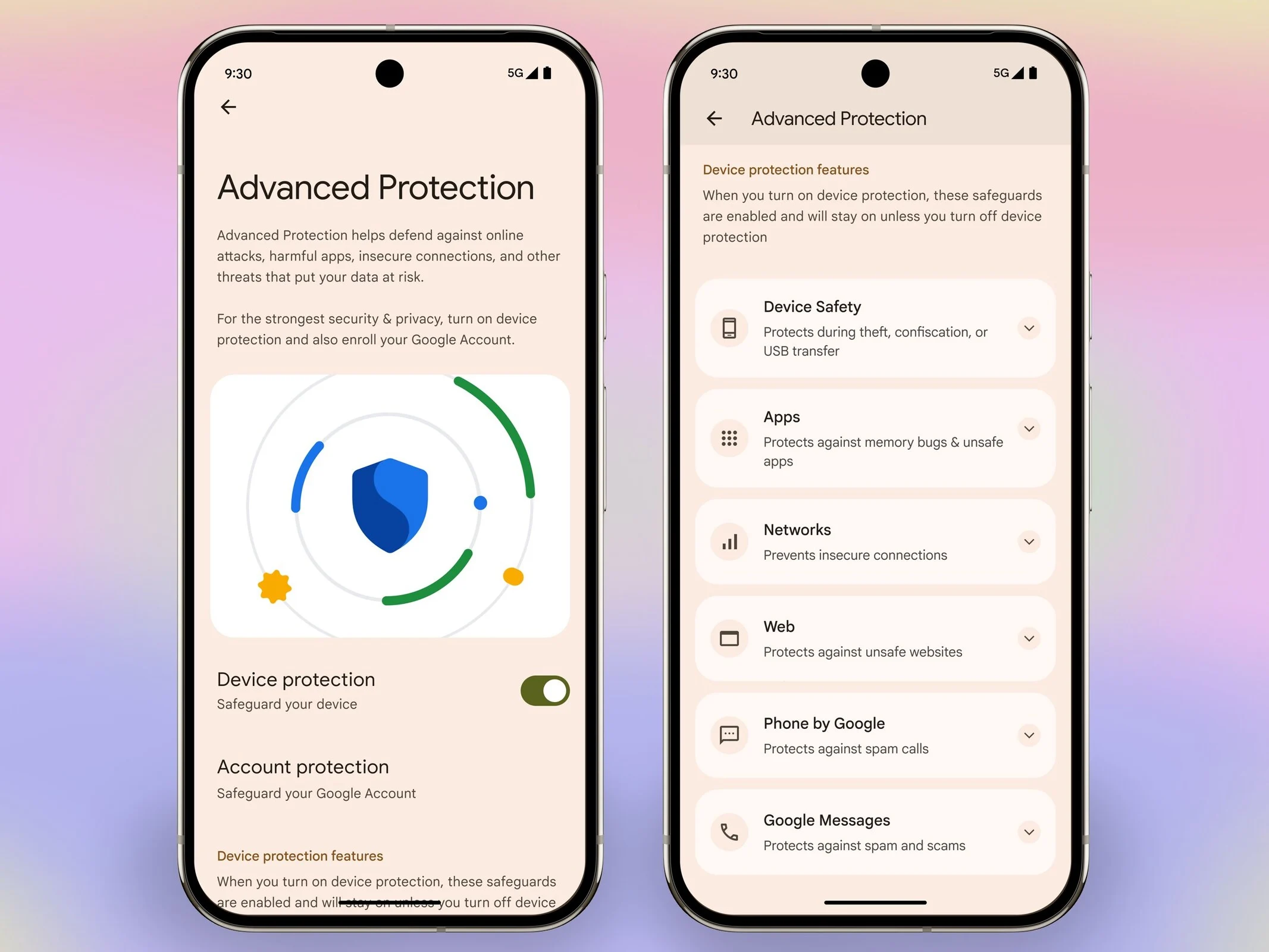Key Takeaways
1. Google introduced a new design for Android 16 with enhanced features and security options.
2. The Advanced Protection feature provides a high level of security by preventing individual security components from being turned off.
3. Advanced Protection uses a “defense-in-depth” approach, managing key security settings across the system and Google apps.
4. New features include intrusion logging, enhanced automatic locking, theft detection, Inactivity Reboot, and USB Protection.
5. Inactivity Reboot restarts the device after 72 hours of inactivity, and USB Protection limits connections to charging only when the device is locked.
Google has unveiled the fresh design of Android 16 just yesterday. During the announcement, various new features were showcased along with changes in design. Additionally, Google shared information about a crucial new security option on its security blog: Advanced Protection. This feature is similar to the lockdown mode that iPhones have, and it aims to elevate the security of Android devices significantly.
A New Level of Security
Advanced Protection serves as a primary security setting for devices. When activated, it guarantees that Android’s top security standards work in unison to offer users robust protection against online threats, harmful apps, and potential data leaks. The unique aspect of Advanced Protection is that it does not allow individual security components to be turned off, either accidentally or through malicious software. Google is implementing a clear “defense-in-depth” approach here, where multiple layers of security are interconnected. Advanced Protection functions as a central control point that manages key security settings across the system and many Google applications like Chrome, Google Messages, and the Google phone app. There are also plans to integrate it with third-party apps.
New and Improved Features
Some security features that operate in Advanced Protection mode have already been present in current Android versions, while others have been specifically created for this new protection mode. A key element is the new intrusion logging, which offers detailed security analyses if a compromise is suspected. Familiar security features like automatic locking and theft detection have now been enhanced with Inactivity Reboot and USB Protection. The Inactivity Reboot feature restarts the device after 72 hours of no activity while in a locked state, rendering data unreadable until it is unlocked. Meanwhile, USB Protection limits new USB connections to charging only by default when the device is locked, helping to guard against physical attacks.
Conclusion
For more details, you can find the full information on the Google Online Security Blog: Advanced Protection: Google’s Strongest Security for Mobile Devices.
Source:
Link


Leave a Reply